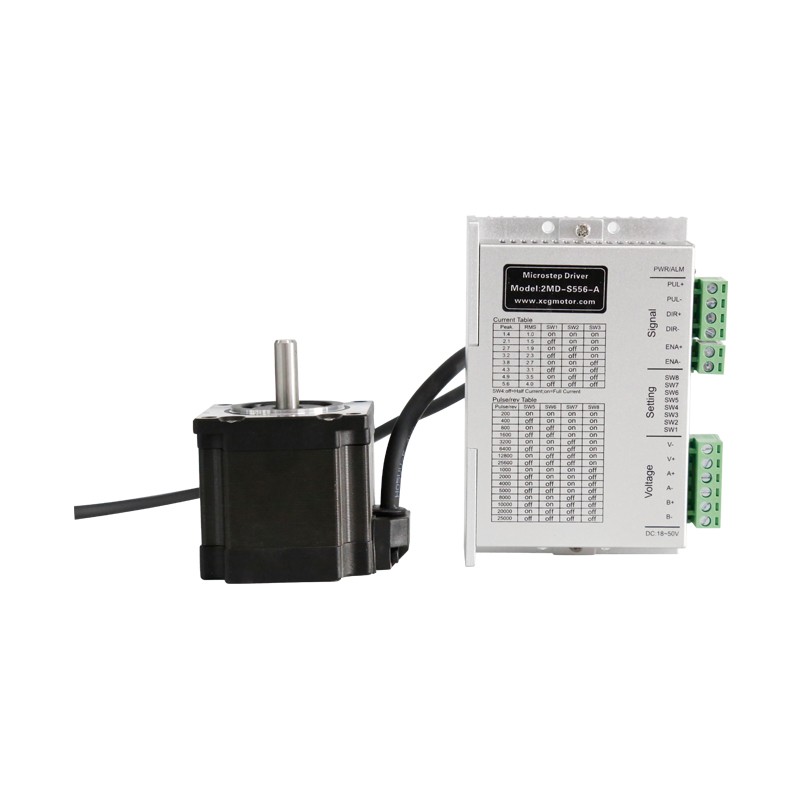Source:Industry News Release time:2022-07-04 Clicks: Popular:Reduction motor manufacturer

The speed of the stepper servo motor depends on the pulse frequency, the number of rotor teeth and the number of beats. Its angular velocity is proportional to the pulse frequency and synchronized with the pulse time. Therefore, when the number of rotor teeth and the number of operating beats are constant, the required rotation speed can be obtained by controlling the pulse frequency. Since the stepper motor starts with its synchronous torque, in order not to lose step, the starting frequency is not high. Especially as the power increases, the rotor diameter increases, the inertia increases, and the difference between the starting frequency and the maximum operating frequency may be as much as 10 times.
In order to give full play to the rapid performance of the motor, the motor is usually started at a frequency lower than the starting frequency, and then the pulse frequency is gradually increased until the required rotation speed is reached. In order to ensure the positioning accuracy of the motor, the motor must gradually reduce the pulse frequency from the highest speed to a speed that can be stopped (equal to or slightly greater than the starting speed) before stopping. Therefore, when a stepper motor drives a load to move a certain distance at high speed and position it accurately, it should generally include five stages: "start-acceleration-high-speed operation (constant speed)-deceleration-stop", and the speed characteristics are usually trapezoidal. If the distance is short, it is a triangular velocity characteristic.
The biggest feature that distinguishes the stepper motor from other control motors is that it can accept digital control signals (electrical pulse signals) and convert them into corresponding angular displacement or linear displacement, so it is an actuator that completes digital conversion.
It can also perform open-loop position control, and input pulse signals to obtain specified position increments. Compared with traditional DC servo systems, the cost of this incremental position control system is significantly reduced and almost no system adjustments are required.
Recommended reading
Related Information
CGXK060
2021-01-13CGX060
2021-01-13Speed motor
2020-12-21Stepper motor
2020-12-21Planetary reducer
2020-12-21CGF-042L1-8-P2
2020-12-21CGXZK085
2021-01-13CGXK115
2021-01-13Planetary reducer
2021-04-15CGXK042
2021-01-13Planetary reducer
2021-04-15CGXZ142
2021-01-13Stepper motor
2021-04-14Speed control device
2021-01-13Stepper motor
2020-12-21Advantages and Disadvantages of DC Brushed Motors
2020-12-19The difference between reduction motor and ordinary motor
2022-08-29Introduction to the advantages and disadvantages of three different stepping motor control methods
2022-02-28Detailed introduction to the advantages of medium hard tooth surface reduction motors
2022-09-17Linear reduction motor gear manufacturing technology
2022-10-21How to choose linear reduction motor?
2022-10-18Reduction motor manufacturers share the installation steps and precautions for cycloidal pinwheel re
2022-09-09The importance of hard tooth surface reducer ventilator
2022-09-26Does the stepper motor need to be equipped with a reduction motor?
2022-07-28The direct cause of linear reduction motor shaft breakage
2022-10-20Several key technical parameters to measure the performance of planetary reducer
2022-11-14Applications of brushless DC motors
2022-05-31How to identify the quality of stepper motors?
2022-06-29Installation steps of linear reduction motor
2022-11-01Let’s learn about the factors that affect the cleaning of planetary gear reduction motors
2022-09-09